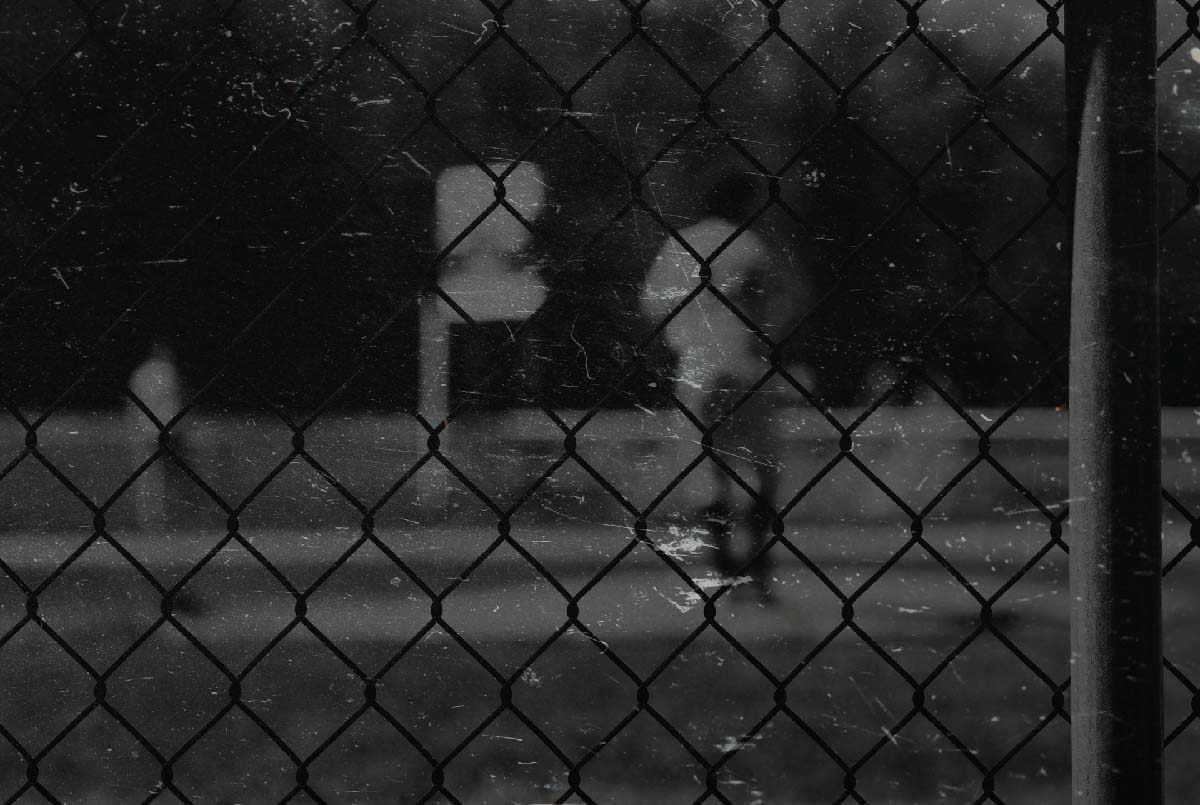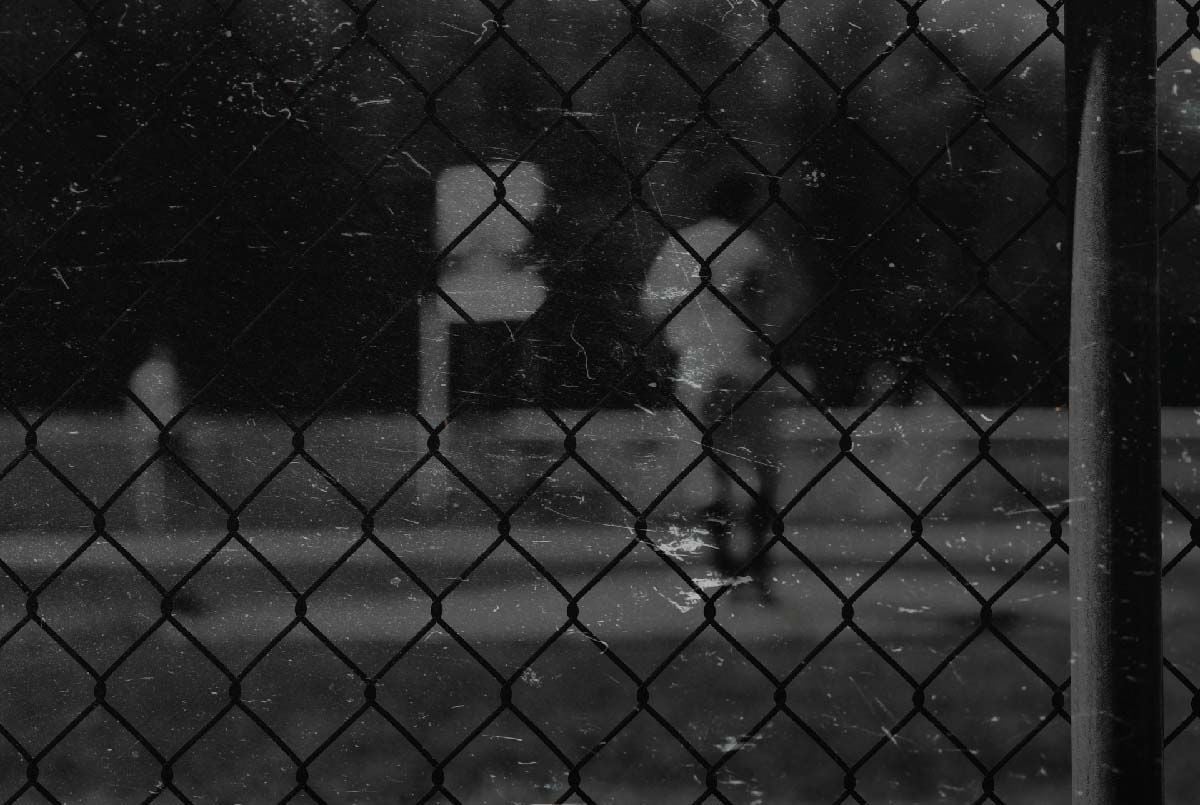Why Do MLB Injury Rates Continue to Skyrocket? And What Does It Mean For Baseball Coaches and Parents of All Levels?

For the last several years, many have pointed out the MLB’s injury problem.
And for the last several years, no one’s come up with a solution.
Why does the injury rate in major-league baseball keep rising, and what can youth, adolescent, and collegiate coaches and parents take away from it?
An Overview of MLB Injury Rates in Recent Years
Professional baseball has been dealing with an increasing injury problem over the last few decades.
In a 2016 article for the American Journal of Orthopedics, Conte et al. did a longitudinal study of elbow and shoulder injuries in American major league baseball.
They looked at injuries from 1998-2015, focusing on medial ulnar collateral ligament, also known as “Tommy John,” related injuries specifically.
By analyzing the number of days players spent on the injured list – formerly known as the disabled list – for both elbow and shoulder injuries, these researchers were able to definitively show that major league baseball players spend more time sitting out for injuries now than they did 20 years ago.
As you can see from the data, the number of injured list placements and days for shoulder injuries stays about the same during the same.

Conte et al. also looked at the financial impact of these increased injury rates.
During the 1998 season, the total cost of paying players on the injured list (IL) and paying replacement players was $136 million for all 30 MLB teams.
In 2015, it had sky-rocketed to $7.6 billion.
That's over a 5,488% increase.
Finding the cause behind the rising injury rates wouldn’t only reduce the number of injured players, it might save professional teams serious money.
So Major League Baseball is very motivated to reverse this trend.
Unfortunately, explaining the increase in injuries in MLB isn’t so straightforward.
The Top Ten Theories for MLB Injury Rate Increases
Coaches, managers, trainers, journalists, and other experts have come up with a lot of ways to explain the number of injuries in the major leagues today.
And while there are a lot of theories out there, most can agree that it’s not one single factor causing higher injury rates.
The real answer is likely some combination of the 10 theories below.
But we’ll do our best to strawman even the theories we feel have the least actual impact or validity below – so as to present what others have forwarded in a fair light – while still making it clear which we feel hold the most water.

1. Velocity = injured list
Pitchers tend to get hurt more often than other position players, which has always been the case.
But in recent years, clubs have put more emphasis on velocity, and pitchers’ average speeds have gone up.
In 2008, the average speed was 90.9 mph.
By 2019, the average pitching velocity climbed to 93.4 mph.
According to sports biomechanics researcher Glenn Fleisig, velocity is definitely one factor in the greater number of Tommy John surgeries.
But he adds, “Throwing 95 miles per hour with good mechanics is less stressful than throwing 90 miles per hour with bad mechanics.”
Faster velocity isn’t the only culprit, then. But it does lead us into number 2.
2. Throwing harder creates more Tommy John surgeries
In 2014 alone, there were more Tommy John surgeries than throughout the entire decade of the 1990s.
Between 1974-1994, only 12 MLB players needed Tommy John surgery.
In 2014, there were 19 surgeries in the MLB before May – not even halfway through the season.
In the last few years, the number of surgeries in the major leagues has gone down a bit, but it’s gone up in the minors.
A pitcher throwing at maximum effort more often – as is often especially the case with relievers – is a likely cause of more stress to the shoulder and elbow.

3. Playing year-round
The basis of several of these theories is overuse.
Overuse can play out in several ways, and affect other players on the field besides the pitcher.
One cause of overuse might be young kids playing year-round baseball, as they start “specializing” in one sport at younger and younger ages.
Youth players who have college dreams (or those whose parents have college dreams for them) are under more pressure than ever before to quit other sports and focus on baseball 24/7.
Playing year-round, on school teams then travel teams, increases the risk of overuse injuries. For young pitchers and players whose bodies haven’t fully matured, that much playing time is often too stressful.
By the time these pitchers and position players reach the MLB, they’ve almost undoubtedly thrown more than their predecessors in the past ever did.
4. MLB games last longer
It’s simple probability. The longer you’re on the field, the greater your chances are of getting hurt.
Baseball games are full of quick, athletic actions that transition from stillness or minimal action. This type of movement patterning leads to pulled muscles and tears.
Games have gotten longer in the last 15 years, with the current average nine-inning game taking 3 hours, 7 minutes.
Back in 2005, the average MLB game duration was 2 hours, 49 minutes.
This means that today, players participating in 155 games or more in a season are on the field for 40+ more hours than players were in 2005.

5. Players are too muscular
Some people think today’s baseball players are too “muscle-bound.” But stronger is usually better right?
Generally, yes. But proponents of this theory would say that it’s not better when there’s a neuromuscular imbalance, and their muscles put too much force on their joints.
A too heavily-muscled body might not be able to perform mechanics properly, which can lead to injury. Too much torque from muscles not only can lead to joint injuries, but also bone, muscle, tendon, and ligament injuries.
Why are MLB players so much bigger and stronger today than in years past?
Most undergo advanced strength training programs year-round, and have highly refined nutrition regimens.
Though this particular theory will be met with very rightful skepticism, a tangentially related idea might be more compelling.
Some players who didn’t have well-rounded and well-informed training leading up to the professional level may have bodily imbalances between one side of their body and the other.
And physical imbalances can indeed lead to injuries.
Every baseball practice session and game features the same movement patterns, and, switch-hitters aside, these patterns are normally done right or left only for entire careers.
To fix these inherent imbalances caused by millions of one-sided reps, a ballplayer needs professional assessments and personalized strength and conditioning programming.

6. Lack of amphetamines
One common explanation for more injuries in MLB is the increased testing for performance-enhancing drugs, like amphetamines.
This increased testing means that such drugs are much less prevalent in the modern game than they were in past decades.
These stimulants deaden the effects of pain and fatigue, so players could keep going even when their bodies might’ve had enough.
A similar theory developed in conjunction with the lack of amphetamines one, says that because players currently have fewer available methods for playing through the pain, they are now left with a choice to either sit out games or jeopardize their lucrative contracts with injuries.
According to John Hoberman, professor at the University of Texas and expert on doping,
These drugs postpone the symptoms of injuries…and players are realizing that they can’t play hurt [without them].
This player realization is at least a positive step toward understanding and eventually reducing these alarming MLB and MiLB injury rates.

7. Overdiagnosis
One explanation, put forward by Dr. Glenn Fleisig and others, is not that injuries have simply increased, but that sports medicine practitioners and doctors have just gotten better at detecting injuries.
For example, sophisticated MRI machines can find abnormalities that might not be significant or the start of an injury at all, but players with such abnormalities get sent to the injured list anyway.
Although there’s no denying that injury detection in baseball is better now than it’s ever been, that theory may not fully explain the sheer number of injuries that the MLB sees today.
8. More risk-averse teams
Just as players don’t want to push themselves too far for fear of losing their contracts, neither do MLB franchises want minor injuries to turn into major ones.
These clubs invest a lot of money in their players, and would rather they sit out for a few weeks than be out for an entire season.
This is used as another explanation commonly touted for the increases to the injury list.
This theory might not hold much merit, however. As we mentioned earlier, paying players to be on the injured list and paying for their replacements is also costly to team owners.

9. More risk-averse players
Teams don’t want to lose players to injury and players don’t want to get cut either. Salaries have increased considerably in the last few decades after all.
The average MLB salary in 1990 was $578,930.
In 2018, it was $4,095,000.
Today’s players (and teams) have a lot more to lose. They don’t want any injury, no matter how small, to ruin their long-term baseball career.
This theory says that players are more likely than ever to accept or request being placed on the injury list.
10. Injured list for more than injuries
The potential result of more risk-averse players and coaches means that players are ending up on the injured list for more than just traditional, physical injuries.
Since 2016, players can go on the injured list for as few as 10 days.
Teams might send a player to the injured list if they’re having a slump, to let them work through it outside the limelight.
Teams are also placing players on the list to limit the number of innings they pitch, as a strategic move.
S what looks like an increase in injuries could at least partially be player slumps and roster expansion.
As we mentioned, pointing to a single one of these theories as the explanation for more injuries would be extremely naïve.
Teams and experts will keep trying to figure it out though, while considering these and other possibilities along the way.
Wanna grow your baseball or softball coaching brand?
Get connected to new local and online lesson clients—along with all the tools you need to scale.
Download the free app

Efforts to Reduce Injuries in Major League Baseball
The most notable, systematic effort to address injuries was undertaken by the Washington Nationals in 2016.
After leading major league baseball with 2,053 days lost to injury in 2015, the club decided to bring on a physiotherapist who’d had success lowering injury rates for the Leeds United Football Club, a soccer team.
With an “analytics-driven” approach to preventing injury – which involved nutrition, strength and conditioning, stretching, and ongoing biomechanical testing – the Nationals cut their number of injury days in half in one season.
But their new total of 1,030 days was about average for most teams at the time.
And in 2017, the Nationals’ injury days went back up to 1,132, and in 2018 they increased to 1,416 making the Nationals again one of the top teams for injury days during one season.
Although this approach did reduce injury days significantly, the results weren’t consistently promising enough to encourage other teams to try the same program.
That puts us back where we started – what’s causing all these injuries?
Experts, commentators, researchers, and all those working in baseball still need time to determine the greatest risk factors for increased injuries in the MLB.
But what’s happening injury-wise at other levels of play?

Injury Rates for Youth Baseball Players
Unfortunately, the growing number of injuries isn’t isolated to major league ballplayers.
Similar trends are occurring in youth leagues, high schools, and colleges across the country as well. Pitchers are getting Tommy John surgeries at younger and younger ages.
And some experts think many of the same theories that apply in the majors apply to youth players as well:
- Overuse
- Greater emphasis on velocity
- Better injury detection techniques.
According to an epidemiological study by Dr. Glenn Fleisig and Dr. James R. Andrews, five percent of youth pitchers (ages 8-18) will suffer a serious elbow or shoulder injury within 10 years.
They also noted that pitching volume was the strongest known predictor of injury in their study.
What definitively though can be causing these injuries?
Well, Melguin et al. reviewed the literature on injury prevention in baseball, and put forward a few reasons why youth injury rates are going up.
Let’s look at each reason in more detail.
Youth players not following guidelines
In a survey of youth pitchers by the American Sports Medicine Institute, many pitchers admitted to not following recommendations for pitching and engaging in overuse:
- 43% pitched on consecutive days
- 31% pitched on multiple teams with overlapping seasons
- 19% pitched multiple games per day
Much of the arm pain related to pitching is almost certainly due to overuse, which increases risk of injury to the elbow and shoulder.

Youth players pitch with pain
More concerning than youth pitchers ignoring guidelines is their playing through pain.
In the same ASMI survey, 74 percent of youth pitchers reported some degree of pain while throwing.
In another survey about arm pain in youth baseball players, 46% of players said they were encouraged to keep playing despite having arm pain.
In another survey of 98 youth baseball players, aged 4 to 16, 64% said they’d keep playing if they experienced an injury, and 61% said they’d keep playing if they had a sore arm during a game.
It appears that many coaches and players aren’t fully aware of the risks of overuse nor what guideline they should be following.

Injury risk factors
Melguin et al., in their meta-analysis cited above, identify several risk factors for injury among youth baseball players:
- Overuse
- Arm fatigue
- High pitch velocity
- Participation in showcases
- Traveling baseball teams
- Lack of physical maturity
Things like participating in showcases or travelball are not in and of themselves risky, of course, but they can compound the effects of the other risk factors in non-ideal ways.
Official Baseball Injury Prevention Recommendations
What’s needed most to reduce injuries in youth baseball is more awareness of the risks and less pressure on young players, according to Melguin et al.
Based on their data, they offer parents, players, and coaches the following recommendations:
- Avoid throwing activities when the child complains of arm pain.
- Manage arm pain with ice, non-steroidal anti-inflammatory drugs (NSAIDs), and stretching.
- Have the child evaluated by a sports medicine physician.
- When not throwing, have the child do general conditioning and core strength exercises.
- Young pitchers should learn proper fastball mechanics and consistency with their motions before advancing into other pitches or pitching tactics.
- Pitchers shouldn’t pitch competitively more than 8 months out of the year.
- Young pitchers should follow pitch count limits and recommended days off.
- Coaches should use radar guns in practice, as speed may be correlated with injury risk.
When it comes to other injuries, not related to overuse, they suggest the following:
- Wearing protective and adaptive equipment
- Teaching proper fielding, batting, and baserunning techniques
- Face guards
- Softer “safety” baseballs
- Breakaway bases
Unlock your ballplayer’s full potential
Find the perfect vetted coach to build a solid foundation or take your player's skills to new heights.
Download the free app

Injury Rates for High School and College Baseball Players
Injuries are frequent in high school and college players as well.
Many of these players are at the same risk as youth players are for overuse and traumatic injury – but the results can be more severe and have long term effects on a ballplayer’s career in the sport.
High school injury rates for ballplayers
According to Fleisig et al., injuries for high school ballplayers are more severe than those found at the youth level.
They made this assessment based on the greater number of surgeries older athletes face.
Injuries occur at approximately 1 injury per 1000 practices or competitions at the high school level, and overuse injuries of the shoulder and elbow are common.
Pitchers make up the greatest proportion of injured high school baseball athletes, at 38 percent.
And approximately 10 percent of all shoulder injuries require surgery, and three-quarters of them are for pitchers.
The injury prevention methods that apply to youth baseball also apply to high school players. Pitch count limits, strengthening and stretching programs, protective gear, and proper mechanics are just as important for high schoolers as for younger baseball players.
Pitchers especially should take care to stay flexible in their lower and upper extremities before and during the season.
Experts have forwarded that core strength and stability work may also help high school baseball pitchers keep from getting injured.
Check out the results of these trunk endurance exercises in baseball players with no throwing arm issues in their season versus ballplayers who experienced pain.

College baseball injury rates
It’s more difficult to assess college baseball injury rates because fewer epidemiological studies have been done at this level.
The few existing studies of college baseball injuries have shown the overall incidence of injuries to be about 5.8 per 1000 athlete-exposures.
Unsurprisingly, upper-extremity injuries tend to make up the majority of all injuries. Certain injuries are more common at practice than at games.
In one expansive epidemiologic study analyzing 16 years of NCAA injury surveillance data, Dick et al found that ankle and upper leg injuries were common in games, and shoulder injuries occurred more often in practice.
Since there hasn’t been much research on injury prevention in college baseball, many of the same rules from youth baseball seem to apply.
Prevention should, of course, focus again on proper mechanics, protective gear, avoiding overuse, and strengthening of the upper and lower extremities.

What Can Parents and Coaches Take Away from Soaring MLB Injury Rates?
Parents and coaches of youth baseball players should take note of the increasing number of MLB injuries with concern.
Emphasis on pitch velocity in the major leagues has trickled down to college, high school, and youth baseball.
Kids feel pressure from parents, coaches, and themselves to train harder, and ignore recommendations concerning injury prevention.
If we don’t want injuries to become a lasting feature of baseball, then we need an attitude shift, starting at the youth level.
Taking better precautions, coupled with continued study of injury risk factors, will hopefully reduce the rise of injuries in baseball for posterity.
About the Author
Dr. Edgar Rodriguez DC, CCSP.
Founder of EROD Sports Medicine & Training
Doctor Edgar Rodriguez DC, CCSP, is recognized as a leader in both sports chiropractic and performance fields. He's currently an adjunct professor at the University of La Verne.

